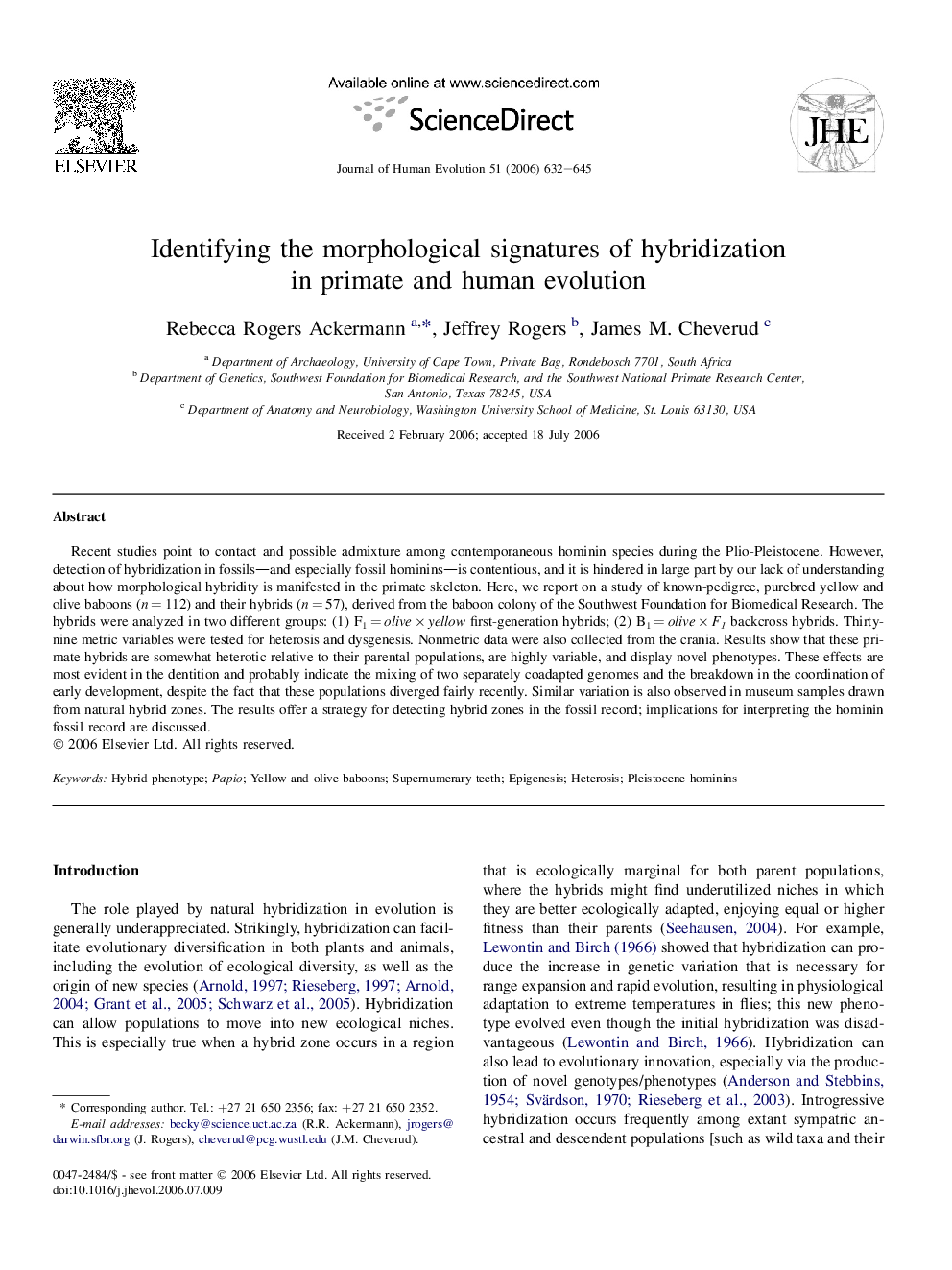| Article ID | Journal | Published Year | Pages | File Type |
|---|---|---|---|---|
| 4557353 | Journal of Human Evolution | 2006 | 14 Pages |
Recent studies point to contact and possible admixture among contemporaneous hominin species during the Plio-Pleistocene. However, detection of hybridization in fossils—and especially fossil hominins—is contentious, and it is hindered in large part by our lack of understanding about how morphological hybridity is manifested in the primate skeleton. Here, we report on a study of known-pedigree, purebred yellow and olive baboons (n = 112) and their hybrids (n = 57), derived from the baboon colony of the Southwest Foundation for Biomedical Research. The hybrids were analyzed in two different groups: (1) F1 = olive × yellow first-generation hybrids; (2) B1 = olive × F1 backcross hybrids. Thirty-nine metric variables were tested for heterosis and dysgenesis. Nonmetric data were also collected from the crania. Results show that these primate hybrids are somewhat heterotic relative to their parental populations, are highly variable, and display novel phenotypes. These effects are most evident in the dentition and probably indicate the mixing of two separately coadapted genomes and the breakdown in the coordination of early development, despite the fact that these populations diverged fairly recently. Similar variation is also observed in museum samples drawn from natural hybrid zones. The results offer a strategy for detecting hybrid zones in the fossil record; implications for interpreting the hominin fossil record are discussed.
